- Wondering how to get Monopoly GO! free rolls? Well, you’ve come to the right place. In this guide, we provide you with a bunch of tips and tricks to get some free rolls for the hit new mobile game. We’ll …
Best Roblox Horror Games to Play Right Now – Updated Weekly
By Adele Wilson
Our Best Roblox Horror Games guide features the scariest and most creative experiences to play right now on the platform!The BEST Roblox Games of The Week – Games You Need To Play!
By Sho Roberts
Our feature shares our pick for the Best Roblox Games of the week! With our feature, we guarantee you'll find something new to play!All Grades in Type Soul – Each Race Explained
By Adele Wilson
Our All Grades in Type Soul guide lists every grade in the game for all races, including how to increase your grade quickly!
Jillian’s Backlog 06: A Journey Through the Games We’ve Missed
I’ve been sick for the past two weeks with one of those sneaky illnesses that creeps up on you in the middle of summer (it’s 80 degrees outside, what’s wrong with you, body?) and it’s put a bit of a …
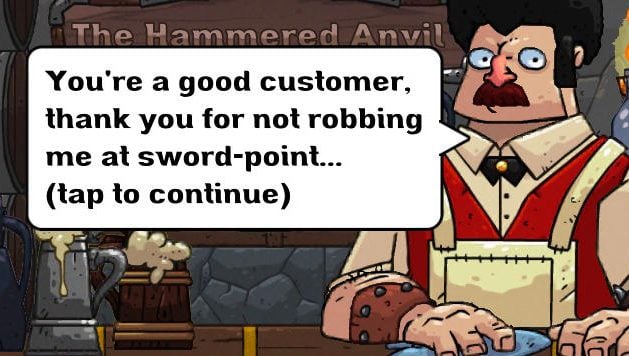
I’ve been sick for the past two weeks with one of those sneaky illnesses that creeps up on you in the middle of summer (it’s 80 degrees outside, what’s wrong with you, body?) and it’s put a bit of a dent in game-playing of any kind. My go-to sick game has been Brawl Stars, which ended up having the perfect level of engagement to stave off house-ridden insanity without requiring too much time or endurance per short match. On the days I had a tiny bit more energy—like, ‘walk from one room to another’ energy—I tapped into the backlog and gravitated toward puzzle games specifically. Working on a logic puzzle or even just winning a match-3 battle felt monumentally productive this week, and I had some fantastic options waiting near the top of my to-play list.
Here are my five mostly-puzzle recommendations for sick or healthy days that I hope you’ll enjoy, too.
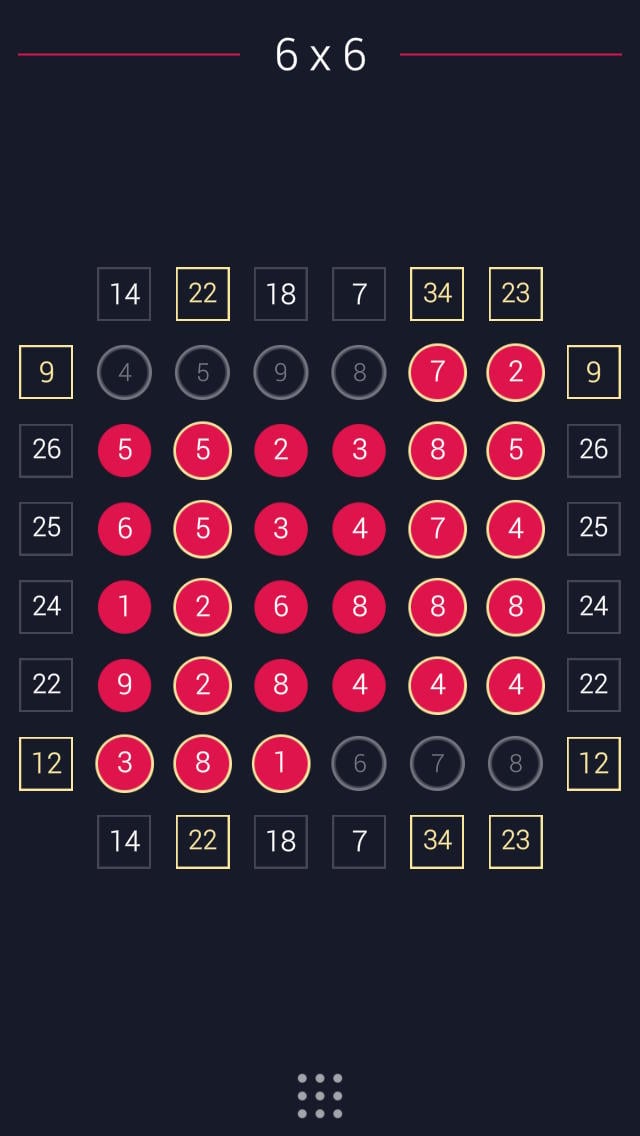
Rullo is built on one very simple gameplay mechanic: addition Sudoku. Yet that one mechanic is used to create an extremely compelling puzzle experience with an unlimited number of levels. You’re given a board—chosen from 5×5, 6×6, 7×7, and 8×8 sizes—with nothing but numbers along the edges and across the rows and columns. Your goal is to turn off (or on) the numbers in the center of the board so that those remaining add up to those on the edges. However, since it’s Sudoku, each tile is shared between multiple rows, so even if a number works for a particular sum it may not fit another. You might activate a “3” and a “2” to add up to the 5 in the top column, but that “3” is also part of a row that already equals 7 and is now too large.
There’s a very different approach to this type of Sudoku that is more about working your way backwards, but it still appeals to and activates the same mental workout. Little touches, like the option to lock/highlight numbers in a completed row simply by tapping that row’s sum or the ability to save games in progress, ensure every attempt is player-friendly. And the dark color scheme and soothing background music make Rullo basically the perfect nighttime wind-down game (although I find myself picking it up frequently throughout the day, too).
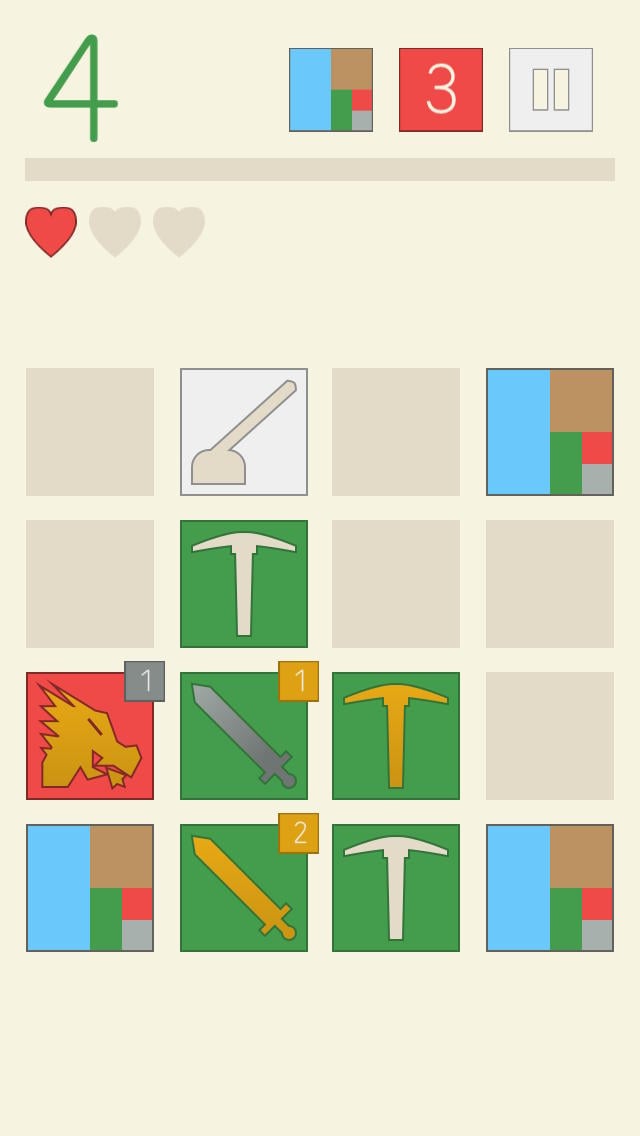
Stencilsmith takes the tile-sliding formula of Threes! and turns it into an epic weapon-crafting and dragon-slaying adventure. Instead of combining like-numbered tiles to reach larger sums, you’re using pickaxes, hoes, and swords fused with ore to get stronger tools that can take down enemy tiles. Dragons will be added to the board intermittently, and the only way to remove them is by combining them with a strong enough sword tile—anything else will simply be destroyed and reduce your health.
Your tools’ and swords’ strength are based on the ore they are combined with, so a standard pickaxe tile will generate silver if it combines with ore. Combine that pickaxe with the silver to get a silver pickaxe, which can mine gold, and so on. The basic idea of mashing up tiles to get greater combinations applies, but with the added strategy of deciding what tool to strengthen next and how to prepare for upcoming enemy invasions. The four different game modes offer variety to the already complex puzzle gameplay, and the ability to create your own tiles via the in-game pixel editor is a fun distraction when you need a break from dragon- (or whatever creature you’ve designed)-slaying.
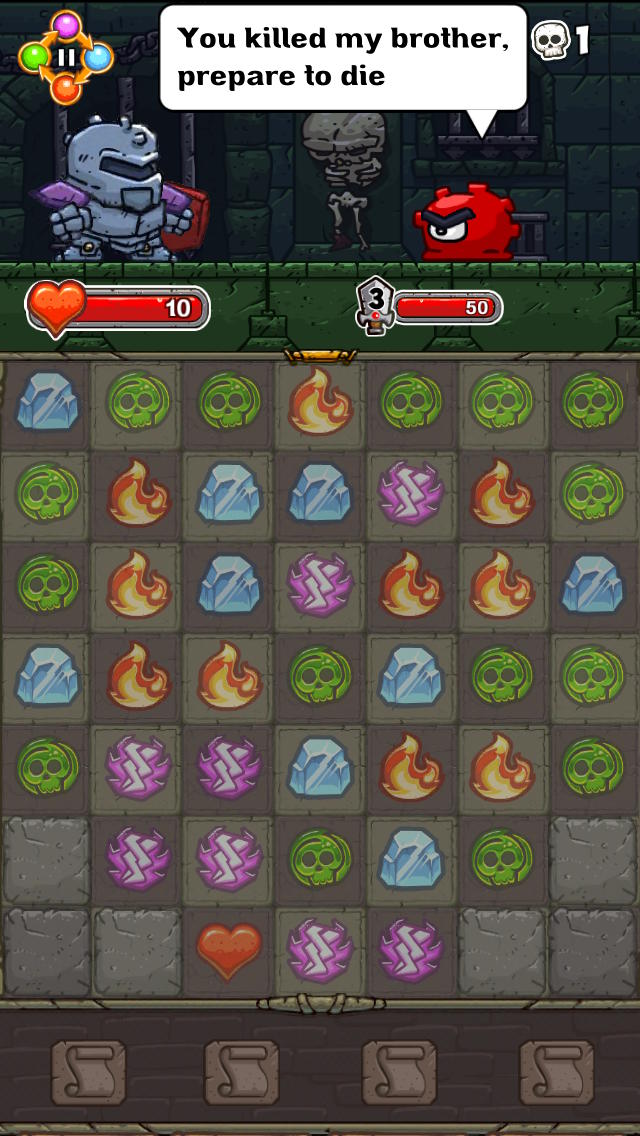
Good Knight Story is a line-matching puzzle RPG battler, which is not an especially uncommon genre these days. Players will control their knight’s actions in short skirmishes against enemy monsters by matching elemental attack, shield, and heart tiles in order to do damage, block, or heal, respectively. Most levels involve taking down two or three baddies before they knock your HP to zero, although a few puzzle stages require dropping keys or other items to the bottom of the board. There’s an elemental diamond to determine strengths and weaknesses—use fire against ice monsters, etc.—and a simple but effective leveling and upgrade system.
What really sets Good Knight Story apart from so many other match-3 RPGs is its personality. It’s dripping with character, charm, and humor, beginning with the game’s backstory: your knight goes out and gets drunk at a local tavern one evening, after which he awakens in a dungeon with a possibly-hallucinated leprechaun giving him match-3 tips. The bad guys he encounters all have humorous lines of dialogue, ranging from enemy knights that demand satisfaction for the insults he slung while intoxicated to random skeletons proclaiming “I want your meat coat.” Upon visiting an inn to ask about recent news, the innkeeper is relieved you don’t rob him, but hands over a bag of money “just in case.” The story, after the post-drunken dungeon escape, remains lighthearted and hilarious right alongside all the characters’ quips. Good Knight Story’s line-matching RPG gameplay is solid and fast-paced, and the wonderful charm injected into every aspect of the experience makes this a must-play.
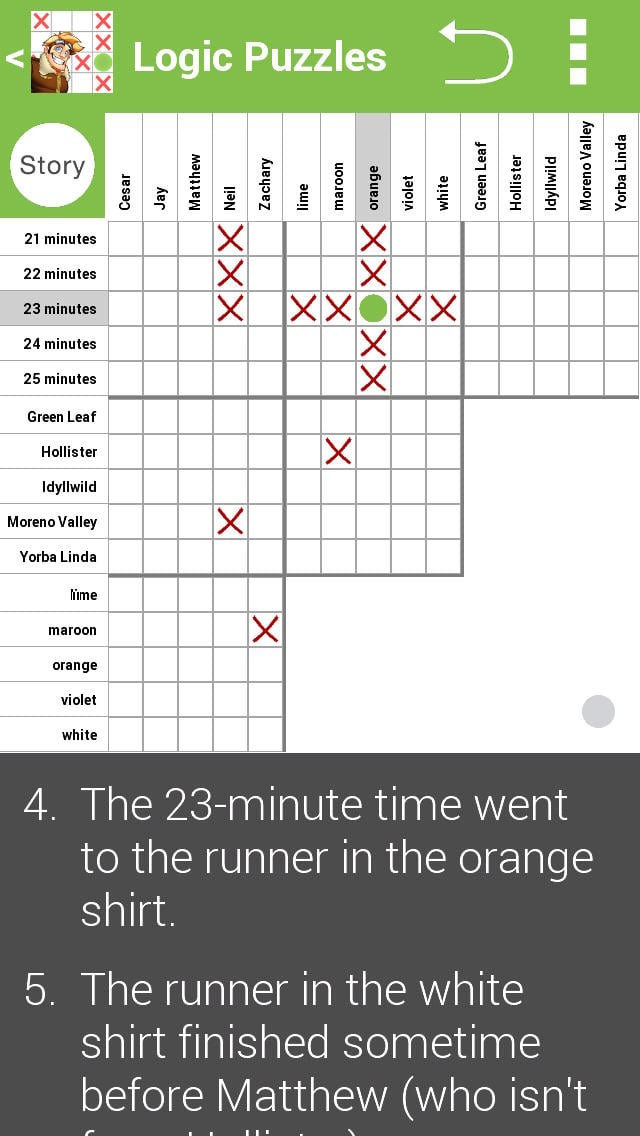
Logic Puzzles – Classic Logic Grid Problems has a generic name, but its content is high quality. If you’re unfamiliar with logic grid puzzles, they’re vaguely similar to picross/nonograms as they require you to fill out a grid with data in each row and column. Instead of using numbers, however, logic grids are based on a series of text clues that seem incomplete when first read but always contain just enough information for you to deduce the correct answer for every entry. For example, you might need to figure out the shirt color, finishing time, and hometown of each competitor in a bike race. The clues you receive would be something like: “John is not from London. The racer wearing red finished two minutes before the racer in white. Susan either finished in 10 minutes or she was wearing blue.” You then mark off points in the grid based on the clues—you could put an X where “John” and “London” meet, for instance—until you’ve filled out every square.
It’s the type of puzzle you might find in Professor Layton, although my first experience with it came from Super Mario RPG and the puzzle door in Bowser’s Keep that challenged you to figure out the results of a triathlon. I am admittedly terrible at these puzzles, but I still love attempting them.
Developer Egghead Games has put together a fantastic selection in Logic Puzzles, with 50 challenges available in the base (ad-free) game and additional puzzles packs available as IAP. The tutorial and clues are clearly written and the grids are laid out so you can see everything at once, including the current clue (although you can zoom in if you have trouble tapping the tiny cells). One of my favorite features is the seemingly simple auto-fill that X’s off all other cells in a row when you find an answer, saving you the unnecessary time of tapping every cell yourself. Plus the hint system and “erase mistakes” option make this a great entry point for anyone new to this type of puzzle game but interested in trying one out.
- Logic Puzzles – Classic Logic Grid Problems on the App Store
- Logic Puzzles – Brain Fun on Google Play
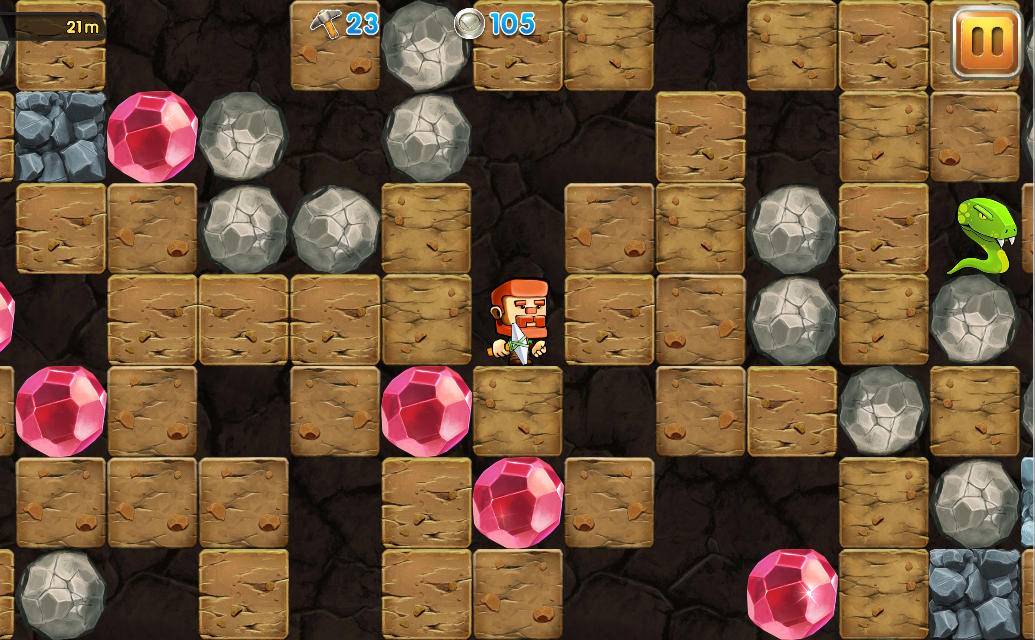
Dig Out! starts out almost dissuadingly simply, with essentially no introduction and a weird empty world giving way to unexpectedly floaty mining. But given a bit of time, this Dig Dug-esque spelunker begins to show off its engaging complexity. You’ll burrow underground with your trusty pickaxe, breaking through blocks of dirt and collecting gems. You can walk in any direction including areas you’ve already cleared, so although you’re technically digging “down,” you can travel back up towards the surface without a ladder or similar concern. There are plenty of other hazards you’ll need to contend with instead, including spiders, snakes, TNT, and boulders that drop down on you if their support block is removed. Your axe has a limited number of uses and hardier rocks use up more of your axe at once, so you’ll need to pick up refill orbs as you progress. When you inevitably reach your demise on a run, you’re teleported back to the surface where you can upgrade your axe, take on missions, open treasure chests you’ve discovered, and more.
The combination of route-finding around obstacles and quick-maneuvering to dodge dangers gives Dig Out! an interesting puzzle-arcade feel that is most visible in its other obvious inspiration: Spelunky. As you dig deeper, you’ll enter new areas—like the Jungle and Necropolis—which house rarer treasures and unique hazards. Special, hidden items can be used to unlock a plethora of different characters with unique abilities, such as Nick the baseball player, who throws balls at enemies. Even the death screens ooze with Spelunky-ness, capturing a photograph of your demise with pithy comments like “I hate snakes!” I was really surprised by the depth (sorry) of this one and have been going back for quick dives all week.
More articles...
Monopoly GO! Free Rolls – Links For Free Dice
By Glen Fox
Wondering how to get Monopoly GO! free rolls? Well, you’ve come to the right place. In this guide, we provide you with a bunch of tips and tricks to get some free rolls for the hit new mobile game. We’ll …Best Roblox Horror Games to Play Right Now – Updated Weekly
By Adele Wilson
Our Best Roblox Horror Games guide features the scariest and most creative experiences to play right now on the platform!The BEST Roblox Games of The Week – Games You Need To Play!
By Sho Roberts
Our feature shares our pick for the Best Roblox Games of the week! With our feature, we guarantee you'll find something new to play!All Grades in Type Soul – Each Race Explained
By Adele Wilson
Our All Grades in Type Soul guide lists every grade in the game for all races, including how to increase your grade quickly!







